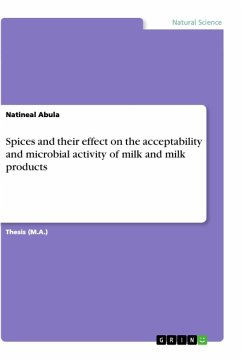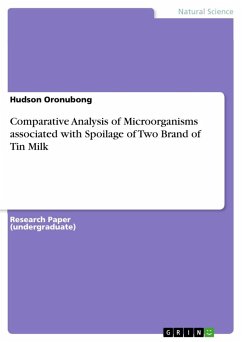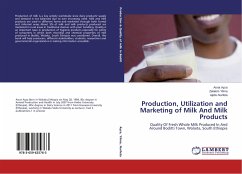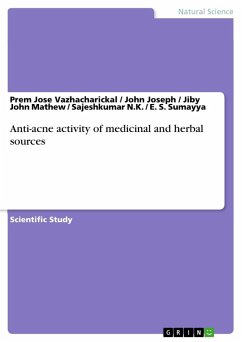Thesis (M.A.) from the year 2018 in the subject Biology - Miscellaneous, , course: Masters, language: English, abstract: Spices have been used by human being for thousands of years having multipurpose functional roles such as medicinal use, preservation of food, improving the flavor and aroma of foods. This is also widely used in Ethiopian dairy products. This study was conducted in Tambaro woreda and Hosanna district to assess the traditional practices, types of spices and herbs used in preserving various dairy products in the study area. It was also used to identify the effect of spices on cottage cheese (ayib) and ghee microbial activities and acceptability under controlled laboratory experiments. The study also explored the potential implications of spice uses towards the sensory properties of these dairy products. The experimental study was conducted as a follow-up to diagnostic survey. The cottage cheese were randomly assigned to either of three spice treatments Kororima and Tikur azimud, or Kororima and Netch azimud mixtures (equal ratio) at 0, 1, 3 and 5% levels by weight concentration, respectively. The ghee samples were randomly assigned to either of four spice treatments Kororima and Abish, or Tikur azimud and Netch azimud mixtures (equal ratio) at 0, 1, 3 and 5% levels by weight concentration, respectively. Cottage cheese samples were stored for 6 days and ghee samples for 30 days at ambient temperature before parameter analysis. Cottage cheese samples were analysed every 24 hrs, while the ghee samples were analysed once in a week for compositional, microbial and sensory properties, which included total solids, ash, fat content, pH, total bacterial count, coliform, and yeast and mould counts. The sensory analysis included flaver, aroma, taste and overall acceptability of ghee and cottage cheese samples. Data was analyzed using SPSS 16.The experimental study highlighted that cottage cheese samples treated with 3% of Korrorima and Netch azimud mixtures received the highest acceptability and lower YAM count(5.746cfu/g) and Coliform counts(1.792 cfu/g). The mean microbial load is higher on control sample (6.40 cfu/g YAM and 1.95cfu/g Coliform counts). Coli forms were absent in all ghee samples. Ghee sample treated with 5% of Kororrima and Abish mixtures revealed relatively higher overall acceptability. Usage of natural extract of spices and herbs is safe and promising option for consumer preference, preservation and shelf life extension of the dairy products.
Hinweis: Dieser Artikel kann nur an eine deutsche Lieferadresse ausgeliefert werden.
Hinweis: Dieser Artikel kann nur an eine deutsche Lieferadresse ausgeliefert werden.








